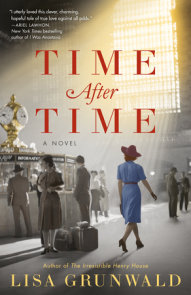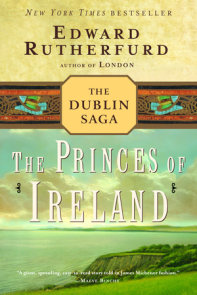READERS GUIDE
What an experience this was, diving into the imagined world of an enchanting, elusive, and mercurial empress, one who happens to be beloved the world over. Add to that the company Sisi kept: a dynamic and captivating cast that included the stoic, devoted, and indefatigable emperor; an idealistic and passionate Hungarian count; a tragic, willful, and drug–addicted crown prince; and a tortured dreamer who reigned from atop his Bavarian cliffs amid otherworldly splendor. And that doesn’t even begin to touch on the cast of supporting characters.
I’ve said it so often as a writer of historical fiction: one truly cannot make this stuff up. One need search no further than the pages of history to find the most extraordinary, most inspiring, most delicious and dramatic story material out of which to mold a narrative. With Sisi and her Habsburg world, I felt that that was the case one hundred times over.
Writing this book was an incredibly humbling experience, for many reasons, but particularly because these characters and the events unfolding around them felt so very big. This was the stuff of epic: World War I and Strauss waltzes and Disneyesque castles and the golden age of imperial Vienna and an empress who raced horses and grew her legendary hair to the floor—-this was a fairy tale meets a Shakespearean tragedy meets a family soap opera meets an international saga.
What cannot be overstated amid all of this drama and grandeur is the impact that these individuals had not only during their own time periods but on the entire course of history. All history books on the Habsburgs should come with the disclaimer “Handle with care.” This is heavy, significant, and astonishing material. And it actually happened!
Not one of us can truly know what any of these moments must have felt like, for Sisi or for any of the other characters involved. For over a century now, meticulous and expert (and copious) historians have studied these individuals and events and have stitched together a complex and multipronged narrative, culled from the innumerable sources and perspectives made available throughout the years—-letters, diaries, eyewitness accounts, newspaper reports, government documents, and more.
As a writer of historical fiction, it’s my great good fortune to be the beneficiary of all of this research and work. The blueprint is there; this history and these individuals become the rich and colorful threads with which to weave my story. With the historical facts and figures as the inspiriting wind at my back, I’ve charted one imagined course through this material, offering one fictionalized view of how it might have looked and felt to inhabit these scenes. How it might have felt to walk through these rooms with Sisi and experience these moments, scenes simultaneously so grand and so poignantly intimate.
Sisi was an individual who loomed larger than life. Even during her own time, the beloved and controversial empress inspired mythology and legend. Printers spilled incalculable amounts of ink chronicling her comings and goings, her very real trials and her overblown scandals. Crowds turned out by the thousands merely to catch a glimpse of her. Women aspired to dress and fashion their hair à la Sisi. She is one of the rare titans to pass through this world as a relatable and sympathetic mortal while also landing a place alongside the select few whose fates have been forever immortalized in the pantheon of the brightest, most undefinable immortals. How lucky are we, then, as devotees of historical fiction, to get to spend hundreds of pages with her! I could not have asked for a more fascinating, more intriguing, more beguiling leading lady to look to for inspiration.
As this is a work of historical fiction, and as Sisi was a figure who inspired tales of both fact and fable, there were times when, for the purposes of plot and pacing, I fictionalized historical details, utilizing the creative license that is afforded to us lucky novelists. Each instance was the result of much deliberation. Determining when and how to take the liberty that the fiction label allows is probably the biggest challenge for me as a writer of historical fiction and one that I must negotiate anew with each topic and novel and scene I tackle.
That said, I would have been foolish not to rely heavily on the historical facts in building this narrative of Sisi and her incredible life among the Habsburgs. All of the raw material to produce (what I hope is) a most compelling novel is already right there in the history books.
Take the character of Crown Prince Rudolf as an example. There, the history constitutes a tragic and true story of a lost soul and a grisly family disaster. Yes, Sisi did in fact intervene when she learned of her young son’s abuse by the sadistic military tutor, Count Leo-pold Gondrecourt. All of the horrifying methods I mention in the novel—-Gondrecourt’s efforts to “strengthen” the crown prince’s “delicate constitution”—-were plucked from the history, and so, too, was the wording of Sisi’s ultimatum to Franz Joseph: “Gondrecourt goes, or I go.” Franz Joseph and Archduchess Sophie saw Gondrecourt’s measures as necessary and appropriate, but when Sisi learned from palace aides and staffers about the harsh methods being employed and the boy’s resulting health crisis, she intervened and did in fact replace Gondrecourt with Colonel Joseph Latour.
The most troubling moments pertaining to Rudolf throughout this novel are true. He did shoot the wildcat from the zoo in cold blood. Rudolf did fire at and narrowly miss his father while the men were out hunting. Details of the crown prince’s opium and alcohol abuse, as well as his notorious philandering, come directly from the historical accounts. So, too, do the details regarding the tension that simmered between father and son, made so much worse by Rudolf printing harsh criticisms of his father in the newspaper. Franz Joseph did have his secret police trail his heir, and he was reported to have erupted at his son at times, apparently overheard by others in the palace as shouting, “You are not worthy to be my successor!” When Rudolf took his own life and the life of his lover Mary Vetsera, he left suicide notes for his mother and sister but not his father.
Also troubling—-as well as incredibly frustrating and confounding—-was Sisi’s apparent refusal to get involved when it became clear just how disturbed her son truly was. After intervening in the young Rudolf’s early educational crisis, the empress appears to have remained alarmingly aloof on future matters relating to the prince. She also had virtually no intimate relationship with her elder daughter, Gisela. Whether it was the result of a belief in her own ineffectiveness, a lingering wound from her mother–in–law’s initial seizure of the children, her selfishness, her depression, or something else, I cannot know, but I found this aspect of Sisi’s character tragic and frustrating. She saw the unhappiness of Rudolf’s marriage to Stéphanie, and while she had no shortage of criticisms for her son’s bride—some of her statements on that topic in the novel are exact quotes—-Sisi never tried to help either of them. She maintained that, unlike her mother–in–law, she would not interfere in their domestic sphere. The heartrending irony of this is that Sisi, more
similar to Rudolf than any of the other Habsburgs in her sensitive nature and highly complicated temperament, was perhaps the one person who could have understood, and might have helped, her
lost son.
Unfortunately, the scene involving Sisi’s callous disregard for Rudolf’s gift of Heine letters on her birthday is plucked directly from the history. That night, Sisi was so consumed by the news of her beloved Valerie’s engagement to Archduke Franz Salvator that she barely acknowledged her son’s extremely thoughtful gesture. Rudolf did in fact break into tears that night, the last Christmas Eve he would spend on this earth.
Marie Larisch’s character is hewn directly from the history. Loyal and longtime attendants Ida Ferenczy and Marie Festetics disliked the young woman and bemoaned her presence in the empress’s household—-a mistrust that would prove tragically prescient when it was discovered that Countess Larisch served as the go–between for Rudolf and Mary Vetsera in their ill–fated trip out to Mayerling to enact their suicide pact. Details of that horrid event are drawn directly from the sources. So, too, are the circumstances after the crown prince’s death, such as the initial confusion over what exactly had happened, the efforts by the palace to conceal the news that it had in fact been a suicide, and the proliferation of slanderous reports of Sisi as a deranged mother cradling a pillow and cooing to it as if it were a baby. While Sisi was too bereft to join Valerie and Franz Joseph at the crown prince’s state funeral, she did make a solitary midnight pilgrimage to the Imperial Crypt to visit his tomb, as outlined in this novel. And Franz Joseph did stand by his wife, giving her his staunch support when the press and the court criticized the empress during those dark days of mourning.
Sisi was never the same after Rudolf died; in a life filled with much sorrow, this was the blow from which the empress never fully recovered. The son whose troubles Sisi had so often avoided in life became a ghost who remained with her until her own tragic death. I can’t help but wonder: How might history have been different if Rudolf had been a more functional and effective member of the Habsburg regime? If he had enjoyed harmonious relationships with his parents and grown into his role in the family? He, who advocated for closeness to England rather than Germany and spoke out for enhanced freedoms and modern reforms and a more liberal society—-could he have influenced his father’s later politics? Might he have helped avert the Great War, saving millions of lives and preventing global catastrophe? We’ll never know, but regardless, we can weep over the dreadful tragedy and the utter waste of it all. I certainly shed many tears over Rudolf and his family and all of the unnecessary and excessive pain.
On the topic of tortured souls, a brief word on the character of King Ludwig of Bavaria is now in order. The details pertaining to Ludwig’s castle Neuschwanstein are pulled directly from fact, and I have used many quotes from the king relating to his relationship with Richard Wagner, his feuds with his government ministers, his abortive engagement to Sophie–Charlotte, and his thoughts on life, beauty, kingship, and art. Sisi’s first trip to Neuschwanstein in this novel is not based on one actual visit made at that exact moment, but Sisi did visit her cousin at his various magnificent castles on multiple occasions. She did find herself caught between her beloved cousin and her jilted younger sister. She did see herself as a sort of kindred spirit to the “Mad King,” and she did struggle greatly around the time of his deposition and mysterious death—-an event that to this day inspires conspiracy theorists and independent investigations. Sisi believed of her cousin, as she does in this novel, that Ludwig’s problem was that he was “not mad enough to be locked up, but too mad to manage comfortably in the world.” And reports allege that Sisi did also describe a bizarre dream in which Ludwig appeared to her, soaking wet, in the middle of the night just months before her death, prophesying that she would soon be joining him and another woman (whose description sounded a lot like Sisi’s little sister Sophie–Charlotte) in paradise.
With regards to the fractious, troubled relationship between Sisi and her mother–in–law, it is true that Archduchess Sophie interfered in her son’s marriage and took the lead in raising Sisi’s three older children. Sophie, much more than Sisi, presided over all aspects of life at the Habsburg Court as if she in fact were the rightful empress and matriarch of the family. Sisi’s journals and letters make very plain the fact that she saw Sophie as one of the—-if not the—-primary antagonists in her marriage and family and life at court. But it’s also true that Sisi mourned the death of her mother–in–law intensely and spent Sophie’s final days keeping a bedside vigil (as she does in this novel) beside the dying woman. I could not help but ask myself: After so much strife and animosity, what softened Sisi’s heart toward the old woman in the final hours? Did Sisi realize that there were in fact two sides to this tragic relationship and that perhaps her mother–in–law had had her own worthy motivations for behaving the way she did? And even though this is a novel told from Sisi’s perspective, didn’t Archduchess Sophie deserve to have her final say, as well?
Those questions gave me the idea to have Sisi come upon Sophie’s diary and learn a bit about her rival’s intimate thoughts and feelings. The archduchess did in fact fall ill while in the midst of writing at her desk. The quotes I incorporate in Sophie’s death scene are plucked directly from the fascinating pages of the woman’s diary, as is the intriguing detail that the pages pertaining to Sisi were the pages most marked up and faded in her mother–in–law’s journal. Discovering that fact made my heart lurch, and softened me toward the older woman. I don’t know if Sisi ever learned these things her mother–in–law thought and wrote about her, but I needed my readers to know this other side of the story. And the fact that Sisi did such a complete about–face, holding a bedside vigil to the point of exhausted collapse, means that she must have known that the archduchess was not simply the evil meddler that Sisi had proclaimed her to be for so much of her life.
Reading the archduchess’s moving words about her son and her daughter–in–law certainly made Sophie a more complex and human figure for me. With her final breaths, she expressed her love for her son and her hopes that he’d fulfill his duty, and I was happy to see that she passed away surrounded by both the devoted Franz Joseph and Sisi. That said, though Sisi showed genuine grief at the archduchess’s death, she was met at the time (as she is in this novel) with vicious press reports and gossip, stories outlining the empress’s selfishness and ineptitude and painfully cataloguing her longtime feud with her more worthy, more capable Habsburg mother–in–law. Any goodwill that might have been Sisi’s after she showed such affection at the deathbed was quickly forgotten, and what was remembered was how hostile the relationship had always been.
And Sophie’s death wasn’t the only time when Sisi found herself lambasted by the Austrian press. The article “The Strange Woman,” included in this novel, is taken directly from the papers, as was the anniversary article stating that “twenty–five years that should have been spent in homemaking have instead been spent in horseback riding.” Count Bellegarde was an outspoken and unapologetic critic of the empress’s, as were the powerful adjutants Count Grünne and Count Crenneville.
Sisi did experience moments of unpopularity with the people, as well, often as a result of her frequent and expensive travels away from her husband and her court. The irony of it is this: the more her peers criticized Sisi, say, for traveling, the less inclined she was to remain in Vienna amid (what she perceived to be) a hostile court. An extremely sensitive individual, Sisi, once she suspected even the slightest censure, would hasten to see disapproval and antagonism everywhere, even when it wasn’t there. So, criticisms of her travels usually led to further travels. Commentary on her inadequacy as a mother led to further estrangement from her children. Critiques of her vanity prompted her to take further refuge in the familiarity and comfort of her beauty regimens. One could certainly argue that this was a most dysfunctional case of chicken and egg playing out on an imperial stage.
Some of the lighter, more entertaining moments—-scenes that seem so outlandish that they must certainly be fiction or, at the very least, embellished—-were in fact drawn directly from the history. For instance, in the chapter involving Vienna’s World Exposition, the colorful details of the shah’s visit come directly from the historical accounts. So, too, do the stories such as the Prince of Wales throwing a chair through the window at the ball, the German empress earning the nickname of “Foghorn,” the Russians demanding such intense protocol, and so on. And it was during the World Exposition that Sisi’s interest in English fox hunts was first roused, though this was from conversation with the Prince of Wales, not Princess Victoria.
Which brings us to Sisi’s time in Great Britain and the blustery, roguish sportsman in the scarlet jacket, Captain Bay Middleton. Bay’s critical statements to Lord Spencer before Sisi’s arrival to En-gland are direct quotes. So, too, are the facts of his quick change of heart upon beholding Sisi in all of her beauty and equestrian skill. Their chemistry was instantaneous and undeniable. Details of Sisi’s rented estates, her hunting experiences, her falls from the mount, the steeplechase, and Bay’s prolonged engagement to Charlotte Baird are all taken from history. The facts of Bay’s visit to Hungary, his rivalry with Esterházy, and his raucously disastrous outing to Budapest are also based on the true events, even the tidbit about his being robbed by a prostitute. So, too, are the details about Sisi’s tense relationship and visits with Queen Victoria, as well as the controversy generated by Sisi’s affection for Ireland and the inadvertent offenses she caused by thinking she could travel incognita. Even the fact that she arrived at Queen Victoria’s castle too early, requiring the disgruntled matriarch to leave a church service, is pulled from the history.
I sprinkled in as many amusing historical tidbits as I could, simply because they were so abundant in the record and, I hope, so interesting and informative for readers. The special and top secret “Imperial Fold” of the napkin actually existed—-and it was in fact a guarded state secret passed down orally to only several living people at any given time. Clearly, this was a matter of the utmost importance! Details of the rules dictating meal etiquette, such as Franz deciding who might speak, who might serve from which dish and when, and so on, were true as well. The details of Strauss’s music and Klimt’s artwork and the architecture near and around the Ringstrasse all come directly from the rich and vibrant history. So does the fact that the kaiser of Germany reportedly declared that he couldn’t stare at Sisi too long without his passions becoming too inflamed.
And what of our confounding, chimerical, elusive leading lady herself? Sisi was in fact as intelligent, well educated, moody, charming, intrepid, and complex as one would think. She loved and could recite from memory Shakespeare and Heine and ancient Greek epics. Her toilette and dress rituals were as elaborate as I describe them to be; it took hours to wash and style her floor–length hair. The extreme measures to which she went to preserve her legendary beauty are also historically accurate. Sisi was fiercely concerned with her weight and maintaining her youthful physique. She ate sparingly, exercised vigorously, and laced her corset so tightly that when you look at her dresses today, it’s staggering to see her dimensions—-even after four children.
Sisi was nearly paralyzed with fear over the thought of aging or losing her famously good looks, and she approached her physical self–preservation with the gusto of a scientist seeking a magical anti-aging elixir. I loved walking her former rooms in the Hofburg and in Schönbrunn and seeing her handwritten recipes for different homemade tinctures to nourish her skin and tame her plentiful waves. Perhaps my two favorite boudoir secrets of Sisi’s are the facts that she (1) slept with raw veal on her face to fend off wrinkles and (2) hooked a string from her hair to the ceiling to relieve the weight of her copious coif.
In addition to horseback riding, her beauty regimens, and her studies, traveling became one of Sisi’s obsessions and favorite diversions. Later in life, Sisi became so manic in her drive to escape and to seek entertainment and to travel that I couldn’t possibly include all of the places she actually visited. The book would have turned from a novel into a travel guide, and our heads would be spinning at the itinerant existence she maintained. She traveled everywhere from Amsterdam to Cairo to the most far–flung Greek islands. The details of her sprawling Achilleion villa at Corfu are historically accurate, and so are Franz Joseph’s frustrations when Sisi abandoned her new Greek palace so shortly after its completion.
While Sisi was gone on her frequent travels, Katharina Schratt, “the friend,” kept Franz Joseph happy by his imperial hearth. As bizarre as it may seem, I have related the circumstances surrounding this three–way relationship as I found them in the history. Franz Joseph first came to admire Katharina Schratt when she played Kate in The Taming of the Shrew. Frau Schratt then in fact came to the Kaiserbund meeting in Moravia to perform. The Russian tsar became smitten with the young actress, giving her gifts as he does in this novel, and Franz Joseph became visibly jealous. Sisi, detecting her husband’s interest, realized that Frau Schratt could be the answer to her and Franz Joseph’s marital impasse. Sisi then actively cultivated a relationship with Frau Schratt, making it perfectly clear to both her husband and the actress that Katharina was welcome in their home and in their familial circle. The Katharina Schratt relationship was probably an even bigger deal in real life than I made it in my novel. “The friend” soon had a villa at Bad Ischl adjoining the emperor’s Kaiservilla, and Franz Joseph would visit her each morning when he was there. While historians debate whether or not their liaisons had a physical component, what cannot be disputed is the committed, long–term relationship that the two enjoyed, and the deep love they openly expressed toward each other. And the fact that Sisi never displayed even the slightest jealousy over Frau
Schratt’s daily presence in her husband’s life. In fact, it seemed to improve the harmony of the imperial marriage; Franz Joseph’s letters to Katharina Schratt burst with declarations of his affection for the actress while also waxing poetic about his unwavering love for his beautiful and elusive wife. As I said—-one cannot make this stuff up.
As we marched closer to the tragic day of September 10, 1898, I found myself growing more and more despondent for Sisi and Franz Joseph. I’ve outlined the schedule and circumstances of Sisi’s last days in Switzerland much as they occurred. She did in fact visit the Countess Rothschild and decline the countess’s offer of a private yacht. She did decline a security detail, in spite of repeated warnings that Geneva was rampant with criminal and anarchist activity. It is suspected that someone at or near the Hôtel Beau Rivage leaked the news of Sisi’s visit, because the city learned of her presence there in spite of the alias she used. Luigi Luccheni, who had come to town to assassinate France’s Duke of Orléans, changed his plans and fixed his blade on Austria–Hungary’s empress. Remarkably, Sisi’s thick hair did soften her fall, and neither she nor anyone who saw the strike realized that a tiny blade had been stuck into her breast. She and Irma continued onward and boarded the steamer, and Sisi did remark, as she does in the novel, that perhaps the man had been trying to steal her watch. It wasn’t until she collapsed on the boat that anyone realized she was bleeding and had been the victim of a stabbing that would soon prove fatal.
In this novel filled with both heartbreak and joy, perhaps nothing moved me more than finding the tenderly prophetic words of Franz Joseph’s final note to Sisi: “I commend you to God, my beloved angel.” I relayed Franz’s grief–stricken reaction to his wife’s murder with historical accuracy, because really, it lacked for nothing by way of heartrending and moving detail. The emperor found out about Sisi’s death via telegram while working in his study, surrounded by portraits of the woman whom he adored. In spite of it all, Franz Joseph had never stopped worshipping at the altar of Sisi. And now, after all of their separation and heartache, the stoic leader showed unprecedented anguish at learning that the wife he’d longed for and missed for all those years would never return home to him. He railed against God and did in fact demand, “Is nothing to be spared me in this world?” while also murmuring through his tears, “No one will ever know the love we had for one another.”
With tears in my own eyes, I sought to conclude the book with some measure of peace and hope, confident that Sisi was at last reunited with those she had loved and lost. Our heroine finally found rest in an afterlife for which she had always hoped and prayed, and, at last, she and Franz Joseph are finally joined together in the perfect harmony that so long evaded them in life.
Questions and Topics for Discussion
1. The Habsburgs are perhaps most famous for being the family to start World War I when its heir, Archduke Franz Ferdinand, was assassinated in Sarajevo. But the world did not simply erupt into a global conflict overnight. What signs do we see throughout this novel that a major international crisis is looming?
2. What is your favorite thing about seeing the Habsburg Court come to life? Is it the music? The fashion? The court rituals? Discuss the aspects of this time period and setting that you enjoyed learning about.
3. The epigraphs of this novel are Sisi explaining why she is such a compulsive traveler, and her lady–in–waiting describing Sisi’s perpetual restlessness. What significance does travel play in Sisi’s life throughout this novel? What are some other forms of escape, literal or symbolic, for the empress?
4. Discuss the three great love interests of Sisi’s life: Franz Joseph, -Julius Andrassy, and Bay Middleton. How do they each treat her differently? How does Sisi behave differently with each of them? Was any of them the one true love of Sisi’s life?
5. Were Crown Prince Rudolf’s troubled adulthood and tragic death inevitable? What impact did Sisi have on his fate? Would history have been different had Rudolf lived?
6. Sisi is still remembered to this day for her otherworldly beauty. Everyone from the Shah of Persia to the Kaiser of Germany proclaimed admiration for her. Discuss this aspect of her personality. Does Sisi’s vanity make her unlikable? Is her fixation with her looks in any way understandable?
7. Discuss the character of King Ludwig of Bavaria. What role does Ludwig play in Sisi’s life? How does Ludwig differ from some of the other monarchs we meet throughout the novel?
8. While at the Archduchess Sophie’s deathbed, Sisi comes across her mother–in–law’s diary and reads various passages that take her back to significant moments in her life and in her problematic relationship with Sophie. Discuss this moment. Did this insight into Sophie’s feelings change your understanding of her at all? How did this revelation affect Sisi?
9. Sisi often laments the responsibilities of her royal role, fighting against the expectations placed upon her, whereas Franz Joseph is more accepting of his obligations and duties. Do you think Sisi was dealt a difficult hand in life? How would you feel if you were thrust into her place?
10. What would have happened had Sisi not been murdered by anarchist Luigi Luccheni? Would the fate of the Habsburg Empire have been altered? Would Franz Joseph have been different? Would history have played out differently?




















